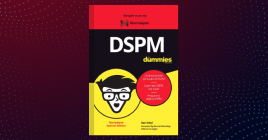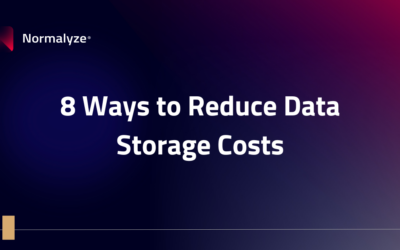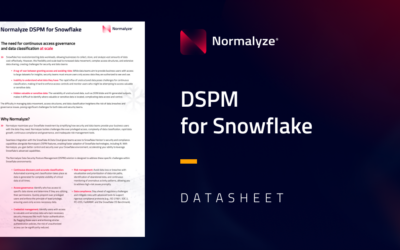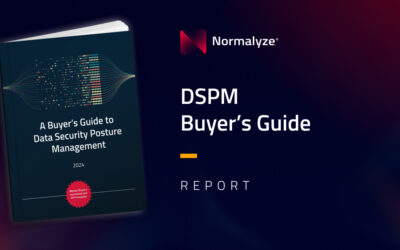A hybrid cloud is a mixed computing environment that integrates public cloud services, private cloud infrastructure, and on-premises hardware to create a flexible, scalable, and efficient IT environment. This approach allows businesses to benefit from the public cloud’s vast resources and scalability while securely maintaining sensitive or critical operations within a private cloud or on-premises infrastructure.
The flexibility, scalability, performance optimization, and cost-efficiency of hybrid clouds have led to them becoming the most common infrastructure setups in a wide array of industries, including healthcare, finance, tech, and utilities.
However, the integration of public clouds, private clouds, and on-premises resources leads to a complex combination of overlapping security protocols and potential vulnerabilities. With the average cost of a data breach amounting to $4.45 million in 2023, effective hybrid cloud protection has become an essential part of any organization’s data security and resilience—and profitability.
What is Hybrid Cloud Data Protection?
Hybrid cloud protection combines elements of cloud security with data visibility tools, ensuring compliance management, effective data monitoring, and ongoing potential threat detection.
The basic principles of hybrid cloud protection include:
- Identity and Access Management (IAM): Control who has access to resources across all environments, ensuring users are authenticated and authorized appropriately.
- Threat Detection and Response: Implement advanced monitoring and threat detection tools to identify and respond to data security incidents in real time.
- Compliance Management: Continuously monitor and enforce compliance with regulatory standards across all environments.
- Data Security Posture Management: Discover and classify your data, and assess risks associated with it to prevent unauthorized access and data breaches.
By addressing these areas, organizations can create a secure hybrid cloud environment that supports their operational needs while protecting their most valuable assets: their data and applications.
The Benefits of Hybrid Cloud Protection
Hybrid cloud protection is a holistic approach to cloud data security that recognizes that data visibility is an essential defense against data breaches and cyberattacks. The benefits of effective hybrid cloud protection include:
- Improved Data Security: Provides visibility into sensitive information as it moves between different environments, preventing data breaches and unauthorized access.
- Unified Security Posture: Helps maintain a consistent security framework across all environments to manage threats effectively and ensure compliance with regulatory standards.
- Enhanced Regulatory Compliance: Allows organizations to determine whether they meet legal and regulatory requirements concerning data privacy and security.
- Improved Disaster Recovery and Business Continuity: Helps identify data that may not be as well protected by backup or disaster recovery protections, allowing cloud security teams to address the data security gap.
- It Helps Your Bottom Line: Simply put, effective hybrid cloud data protection saves organizations money by preventing costly data loss, data breaches, and compliance issues.
The Unique Challenges of Protecting Hybrid Cloud Data
Hybrid clouds offer broad flexibility, but their dynamic nature leads to difficulties in tracking data, managing access, and ensuring sensitive information is securely handled.
Among the key challenges are:
- Shared Security Responsibility: The division of security responsibilities between the organization and cloud providers can lead to key gaps in cloud data security.
- Compliance and Governance: Ensuring compliance and governance in decentralized cloud environments is challenging, especially with varied logging and forensic capabilities across platforms.
- Supply Chain Security: The multi-vendor aspect of hybrid clouds introduces risks, necessitating robust security checks and regular audits.
- Data Protection and Visibility: Separate cloud management platforms with different security postures and settings can lead to security lapses.
- Overall Infrastructure Complexity: The complexity of hybrid cloud environments can lead to confusion and potential oversights, limiting end-to-end oversight.
Hybrid Cloud Data Protection Best Practices
Addressing the unique challenges of hybrid cloud protection involves understanding and implementing several key strategies that are essential for securing data across diverse and dynamic environments. These include:
1. Visibility and Control Over Data
Why It’s Crucial: In a hybrid cloud setup, data sprawls across various platforms and locations, from on-premises servers to public clouds and SaaS applications. This dispersion can lead to shadow data that is difficult to track and secure.
Best Practices:
- Use Data Security Posture Management (DSPM) tools to conduct comprehensive data discovery and classification to understand what sensitive data you have and why it needs protection.
- Use tools that scan data sources, including SaaS applications and data lakes, to compile a master inventory of sensitive data.
- Implement tools that allow for infrastructure visualization to better understand the organization and hierarchy of your data.
2. Effective Data Activity Monitoring
Why It’s Crucial: Monitoring how data is accessed and used is key to maintaining its integrity and preventing unauthorized access. The hybrid cloud’s complexity, with data flowing between different environments, makes this especially challenging.
Best Practices:
- Deploy advanced hybrid cloud data protection solutions with central management capabilities to monitor data access and movement consistently.
- Ensure compliance with data residency and protection regulations by understanding and controlling data flows.
- Implement strict access controls, regular audits, and vulnerability management to prevent unauthorized access and identify potential security gaps.
3. Leveraging AI and Automation
Why It’s Crucial: Manual security processes are often inadequate against sophisticated cyber threats. They also may lead to regulatory compliance issues. The integration of AI and automation can significantly enhance detection, response, prevention, and compliance capabilities.
Best Practices:
- Use AI-powered tools to process large datasets, identify anomalies, and detect patterns that may indicate security threats.
- Employ automation for rapid incident response, reducing the time attackers have to cause damage and helping to contain breaches more efficiently.
- Employ AI-powered tools to remain in accordance with regulatory compliance measures surrounding sensitive data.
Ensure Visibility into Your Hybrid Cloud Security
By focusing on these areas, businesses can significantly improve their hybrid cloud security posture. Gaining a deep understanding of where and how data is stored and accessed, ensuring that data activity is monitored effectively, and integrating advanced technologies like AI and automation into security strategies are pivotal steps.
These hybrid cloud data protection practices not only help in safeguarding sensitive data but also in streamlining compliance efforts and enhancing overall security resilience in the complex hybrid cloud landscape.
Normalyze: Hybrid Cloud Data Security Posture Management
DSPM tools like Normalyze simplify the complex task of hybrid cloud data protection. Our agentless data discovery and scanning platform is easy to connect to any cloud account (AWS, Azure, and Google Cloud Platform). We provide you unparalleled visibility and data monitoring, and a comprehensive understanding of your access governance and compliance management.
With Normalyze, there is nothing for you to deploy or manage. We support all native cloud data stores, structured or unstructured, across the cloud.
Learn more by requesting a free demo today.



